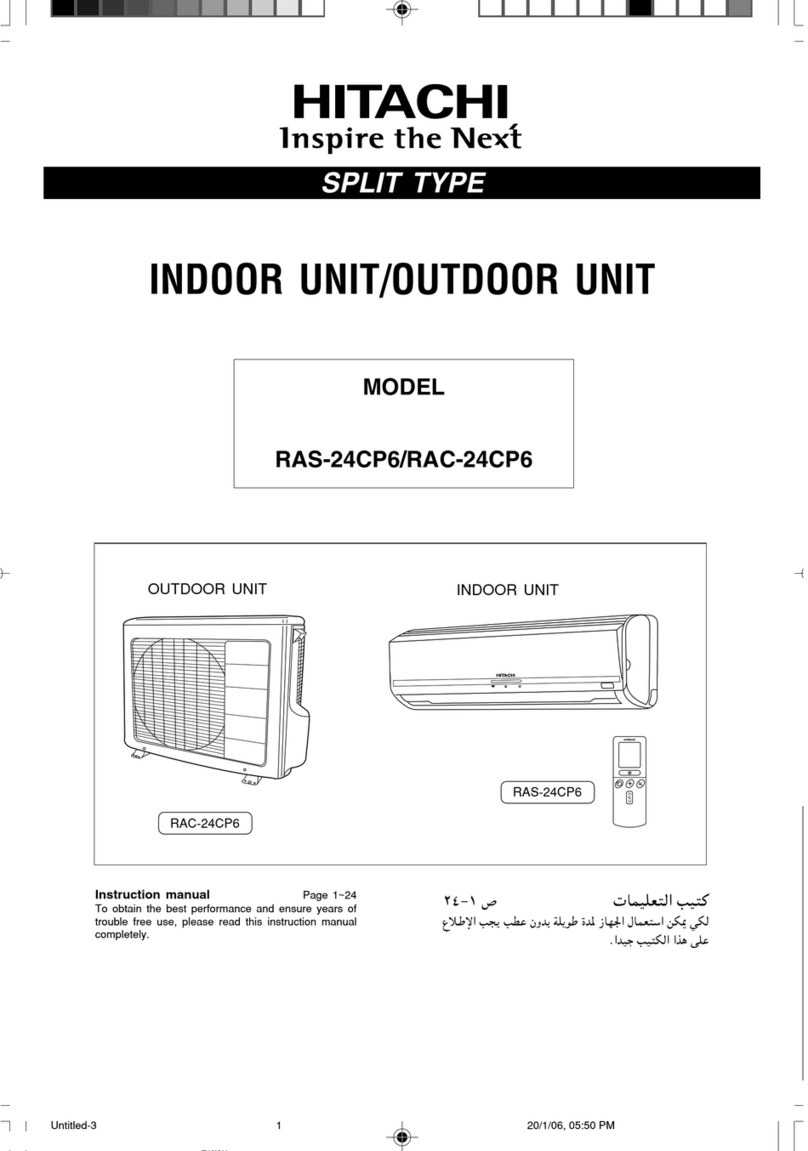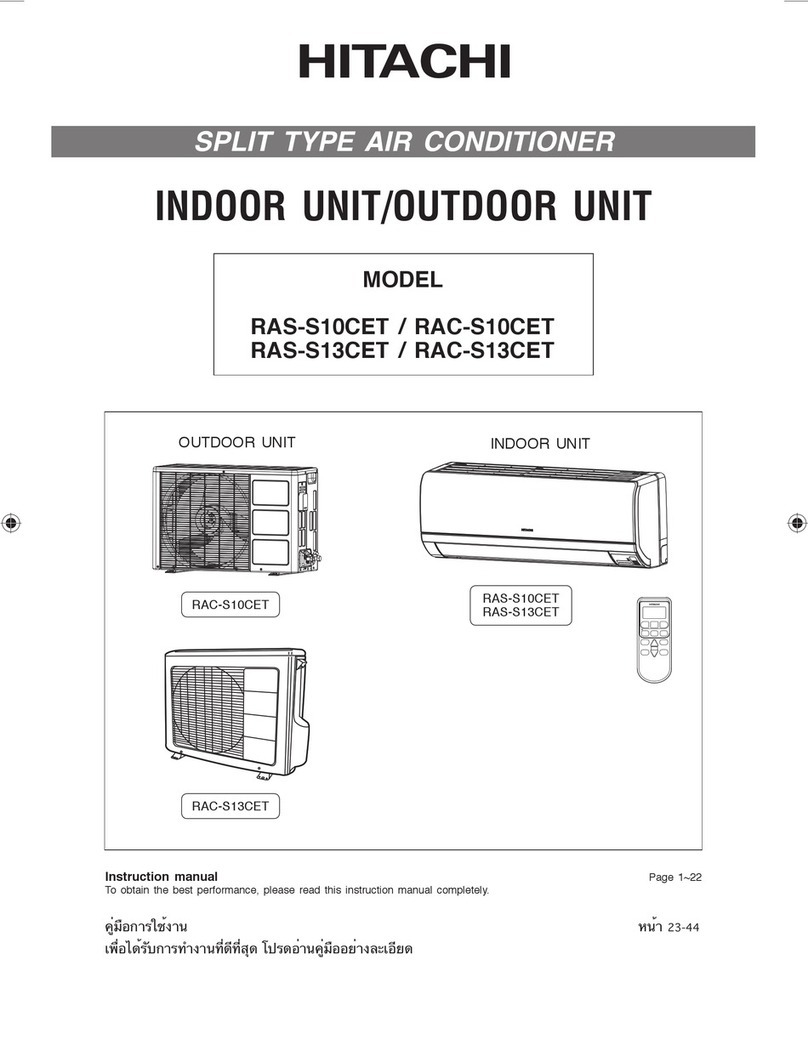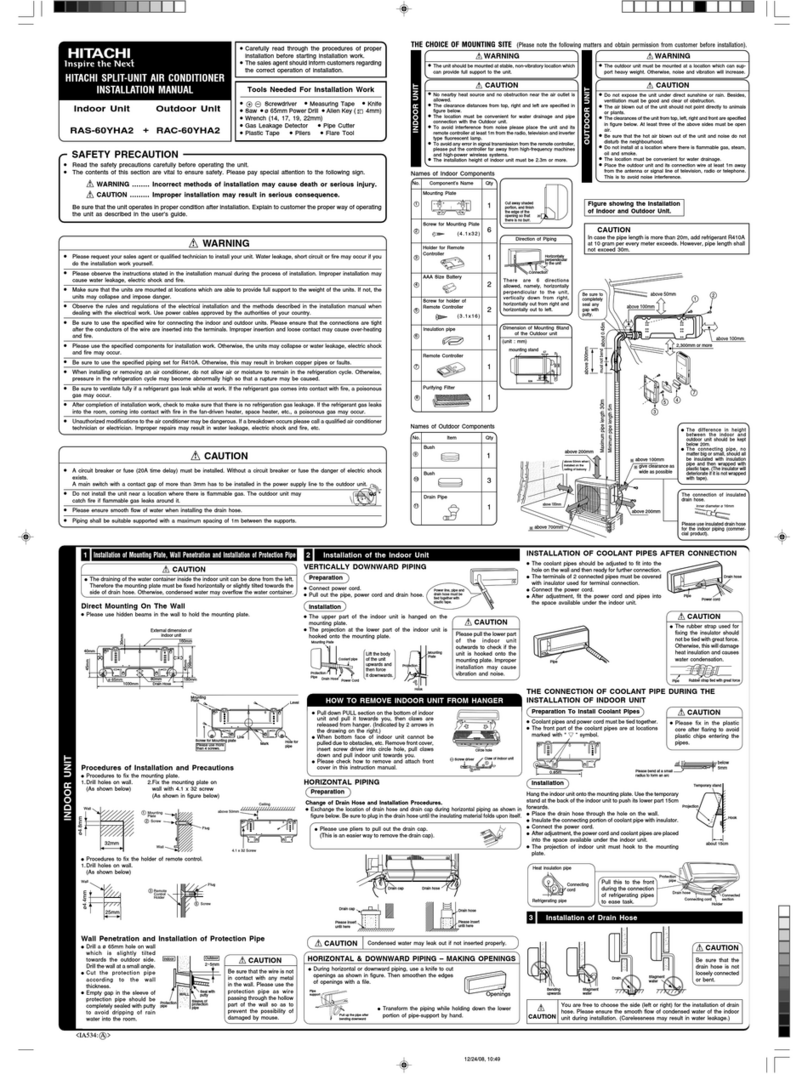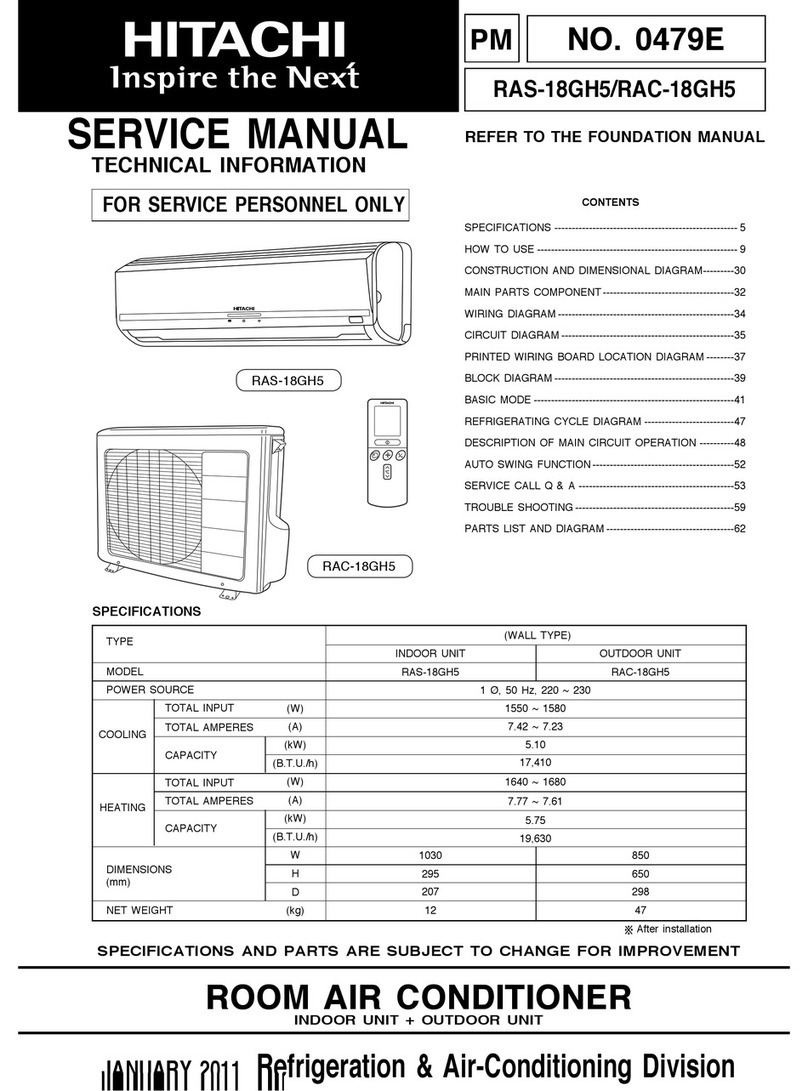Hitachi RUA-NP20ATS User manual
Other Hitachi Air Conditioner manuals
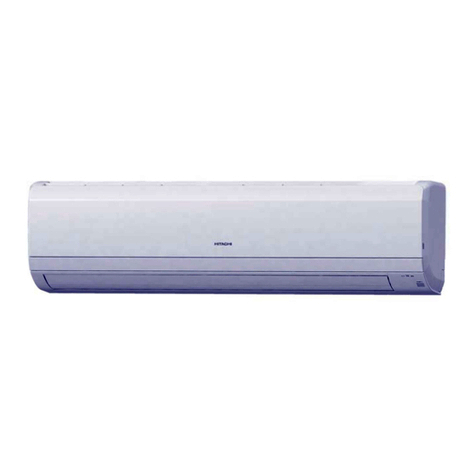
Hitachi
Hitachi RPK-(0.4-1.0)FSN(H)4M User manual
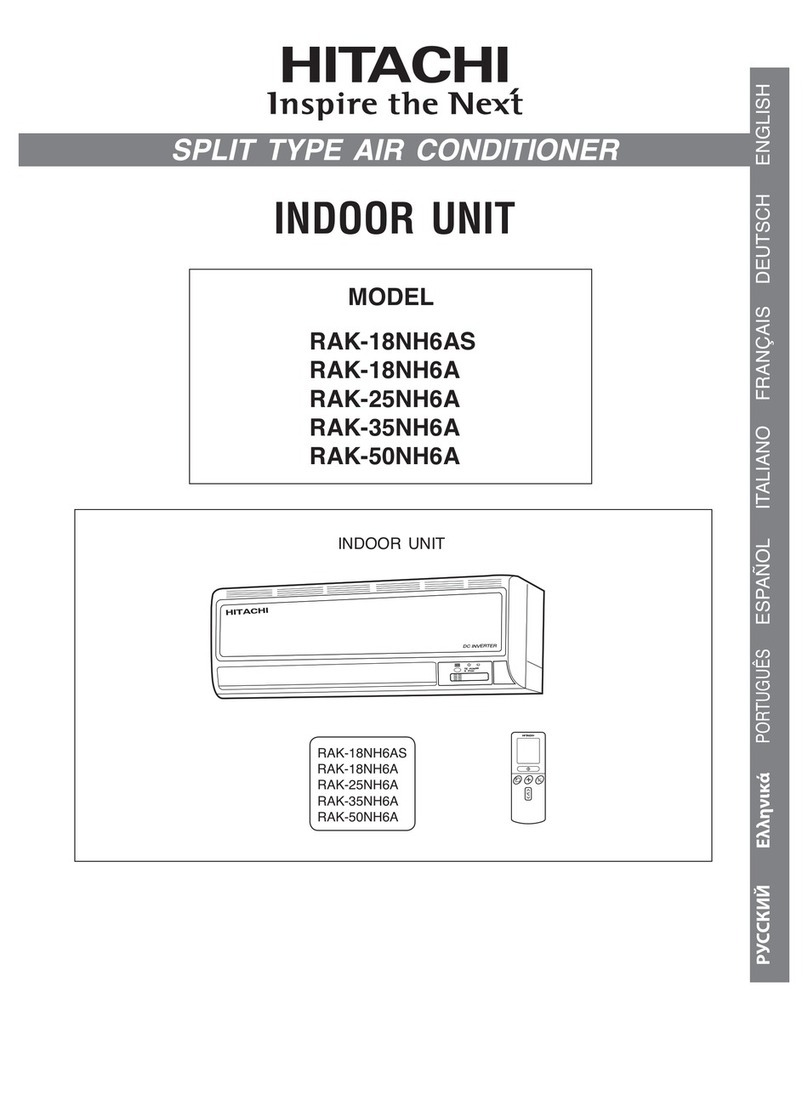
Hitachi
Hitachi RAK-18NH6AS User manual
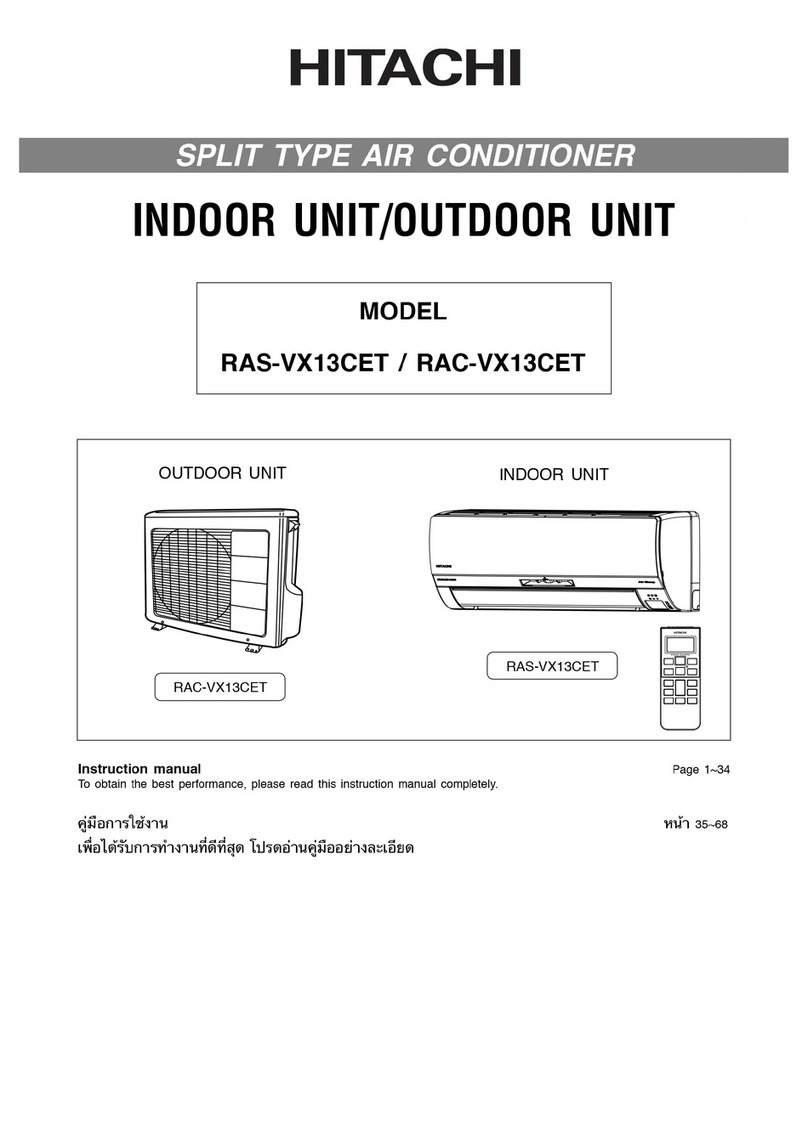
Hitachi
Hitachi RAS-VX13CET User manual
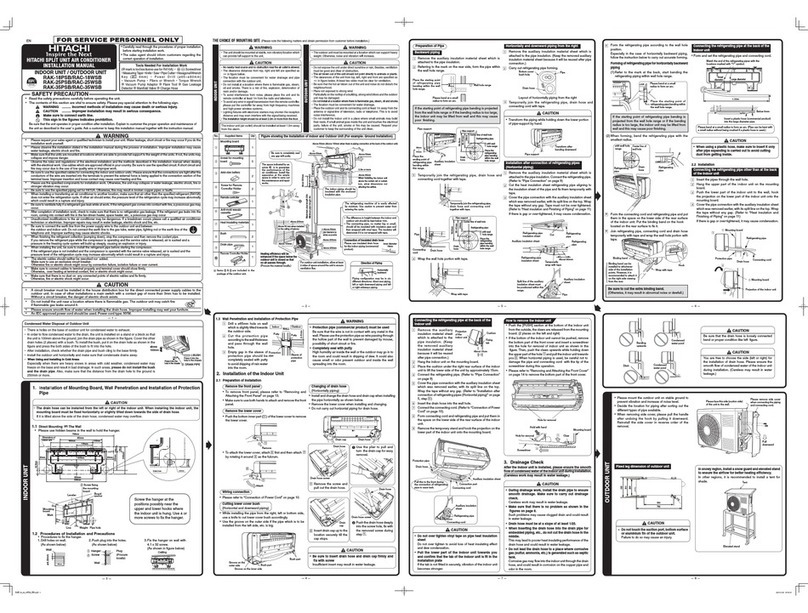
Hitachi
Hitachi RAK-18PSB User manual
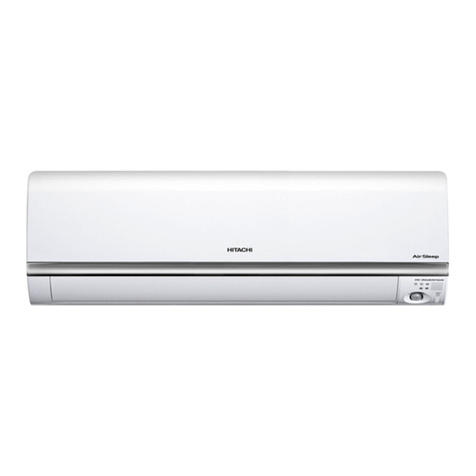
Hitachi
Hitachi RAS-DX10CFK User manual
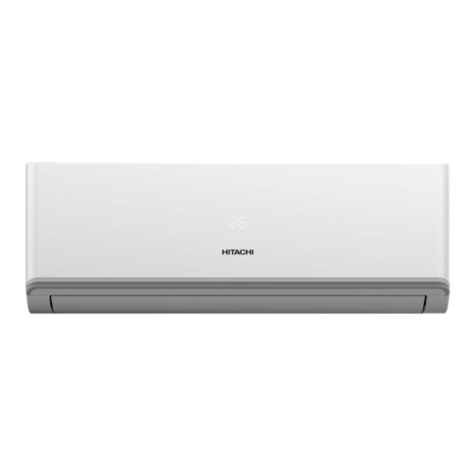
Hitachi
Hitachi RAK-AJ10PCASM User manual
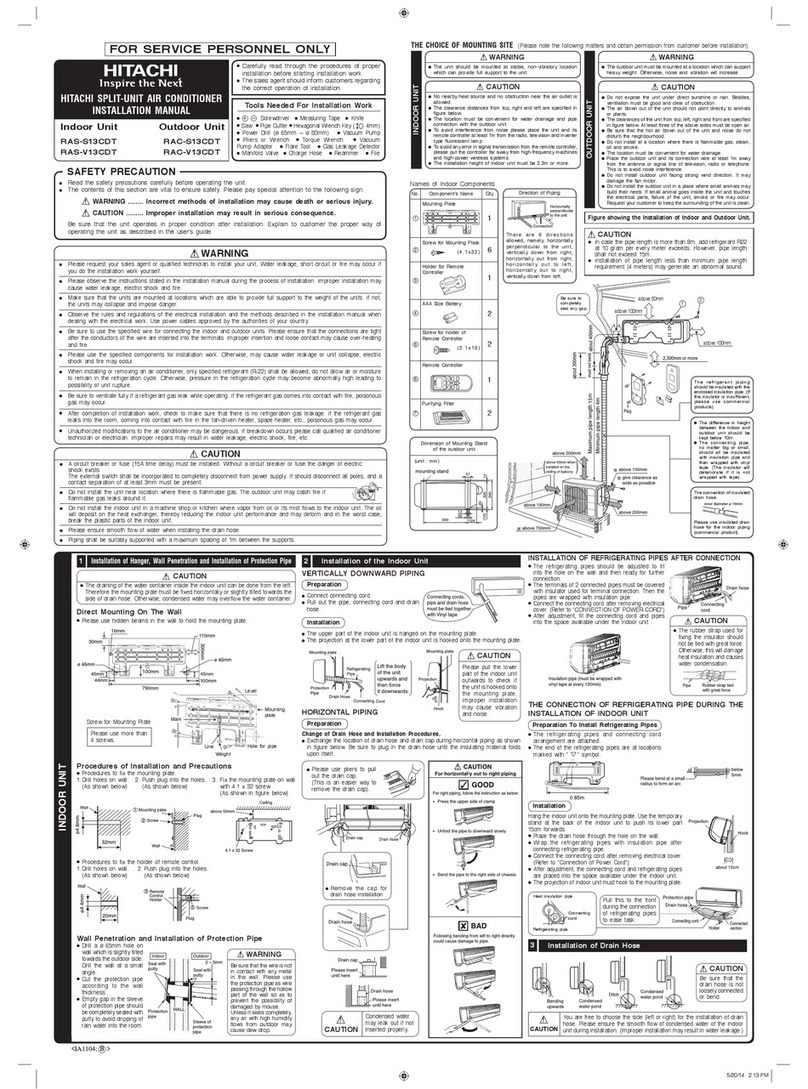
Hitachi
Hitachi RAS-S13CDT User manual
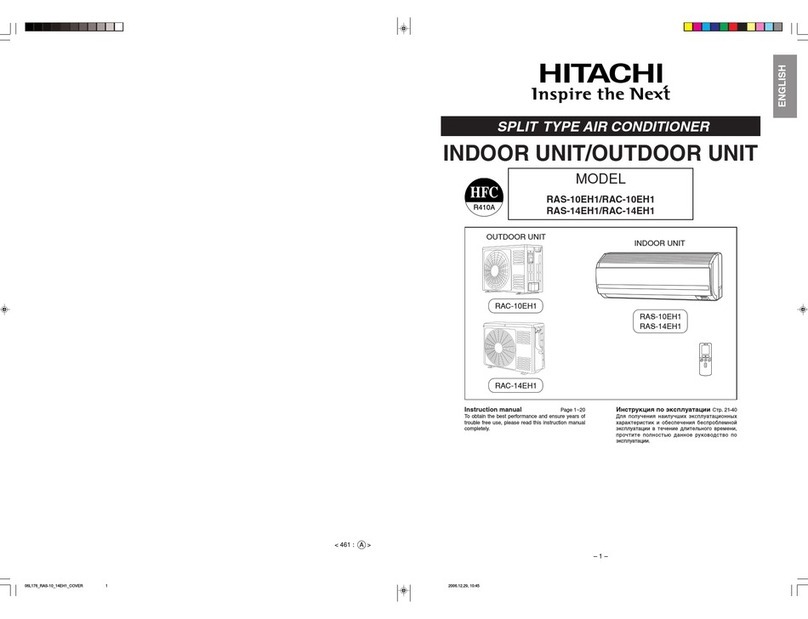
Hitachi
Hitachi RAS-10EH1 User manual
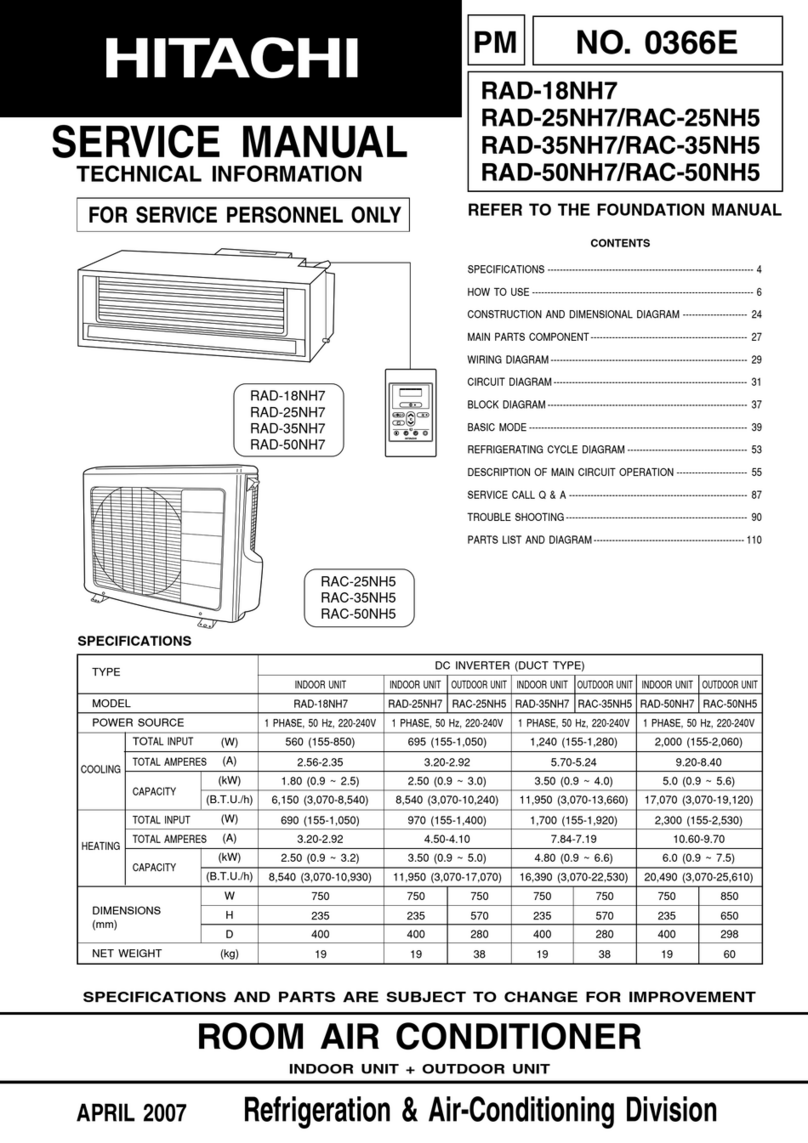
Hitachi
Hitachi RAD-25NH7 User manual
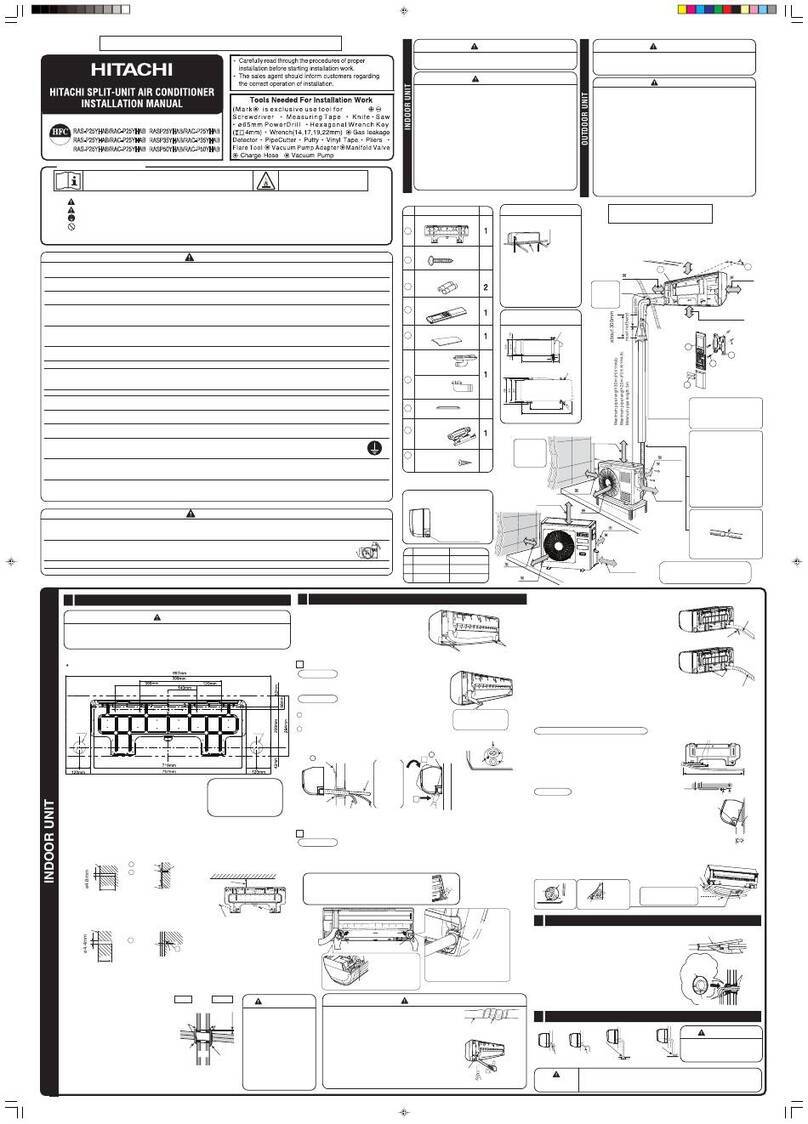
Hitachi
Hitachi RAS-P25YHAB User manual
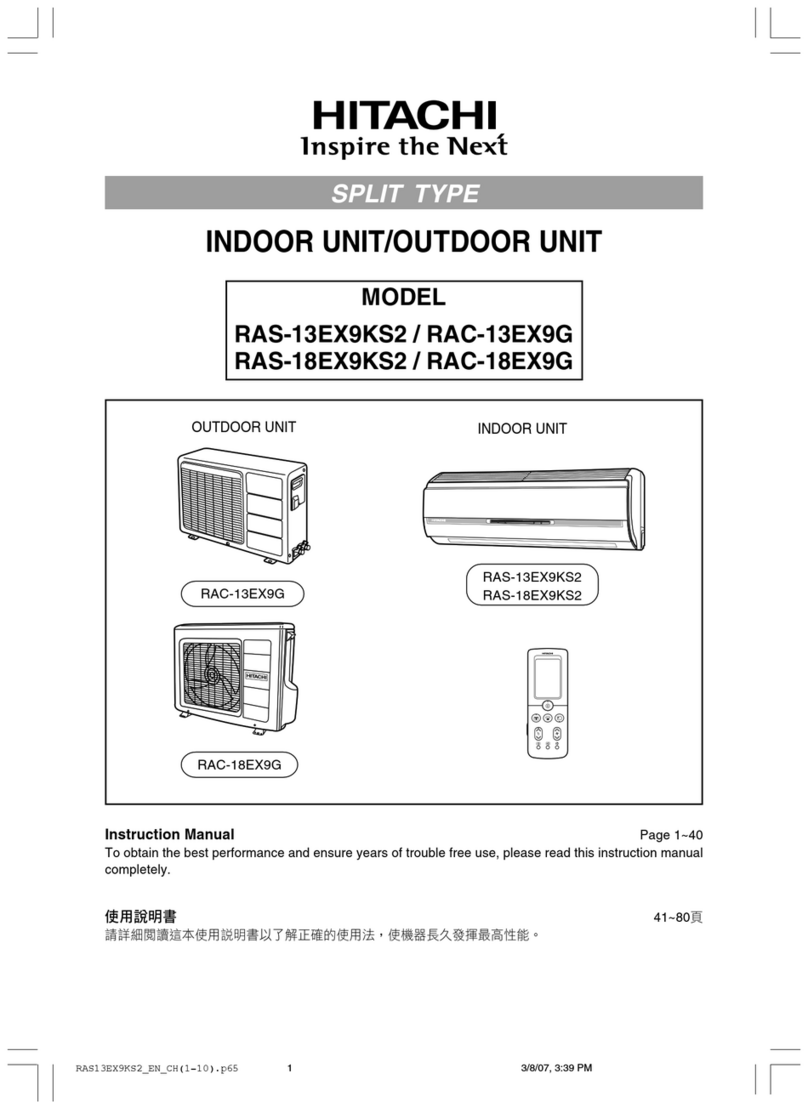
Hitachi
Hitachi RAS-13EX9KS2 User manual
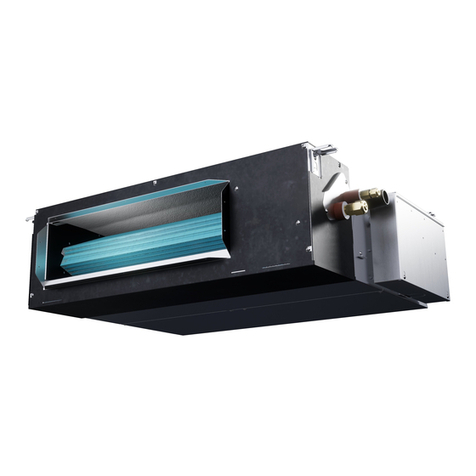
Hitachi
Hitachi RPI-1.5FSRE User manual
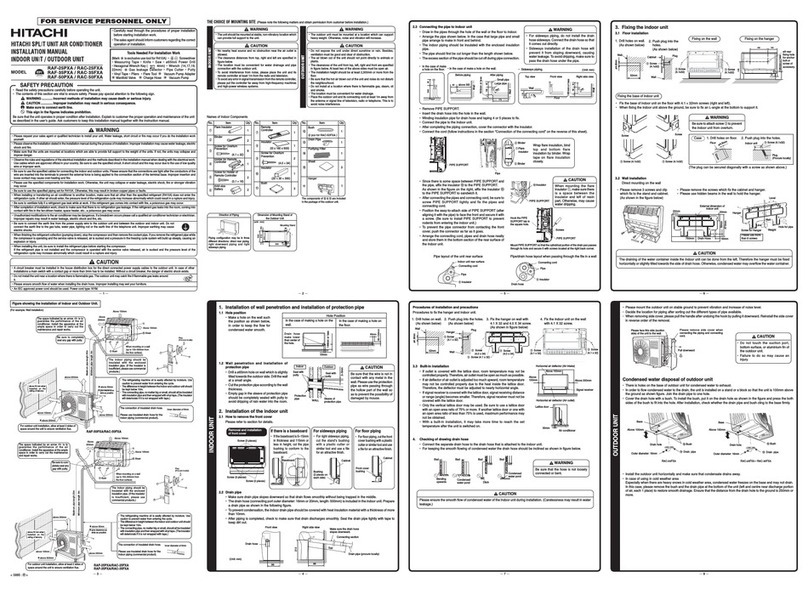
Hitachi
Hitachi RAC-35FXA User manual

Hitachi
Hitachi RAS-18G4 User manual
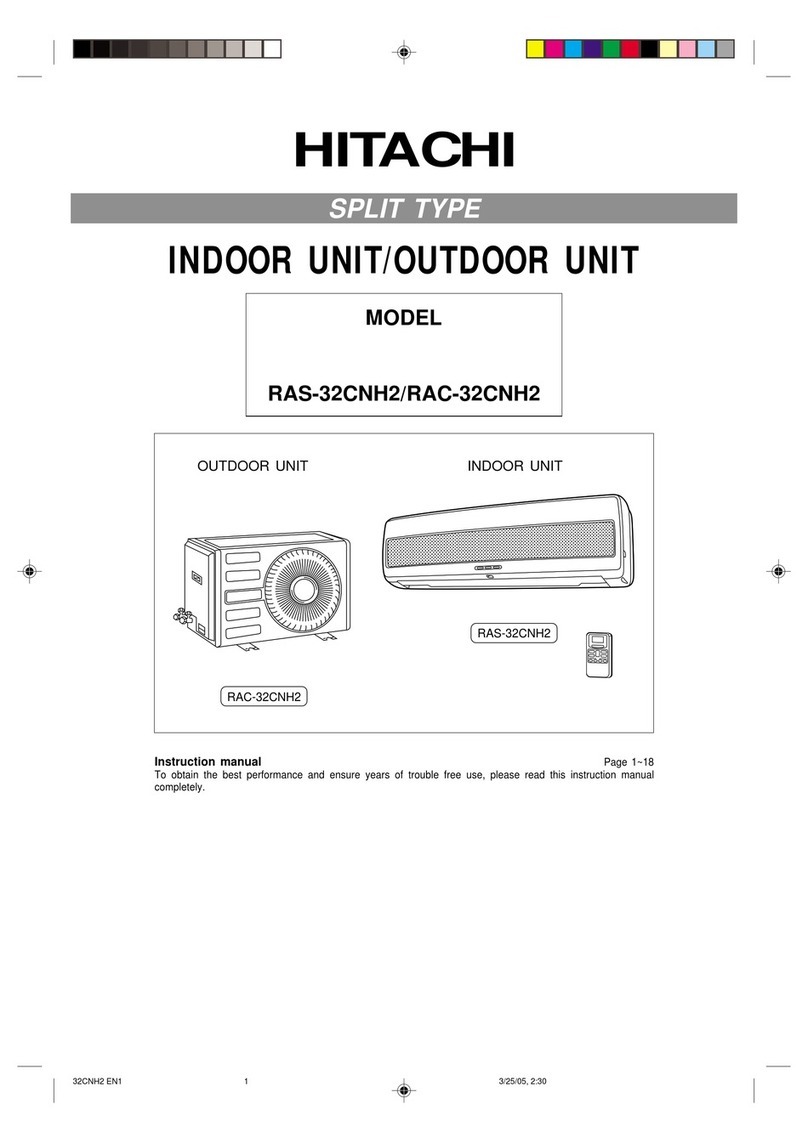
Hitachi
Hitachi RAC-32CNH2 User manual
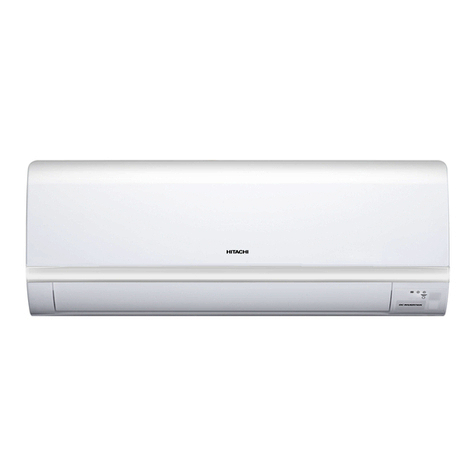
Hitachi
Hitachi RAS-10EH2 User manual
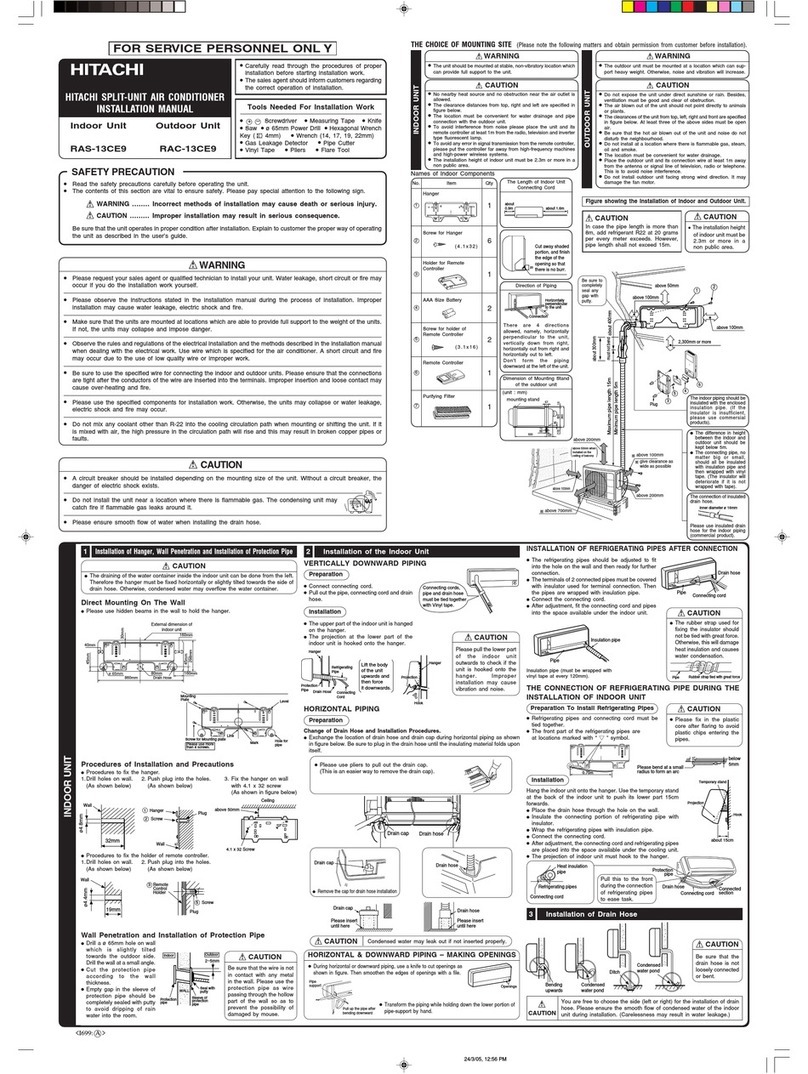
Hitachi
Hitachi RAC-13CE9 User manual

Hitachi
Hitachi RAS-07BH2 Manual
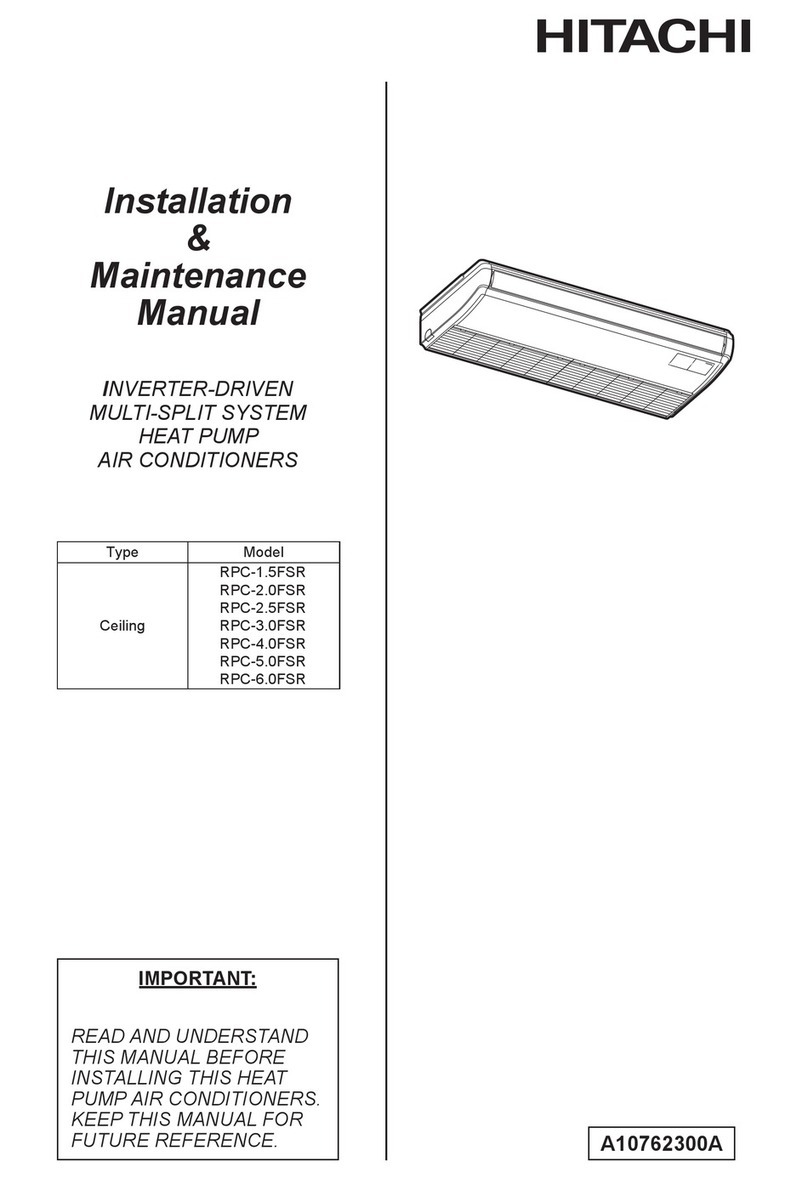
Hitachi
Hitachi RPC-2.0FSR Instruction Manual
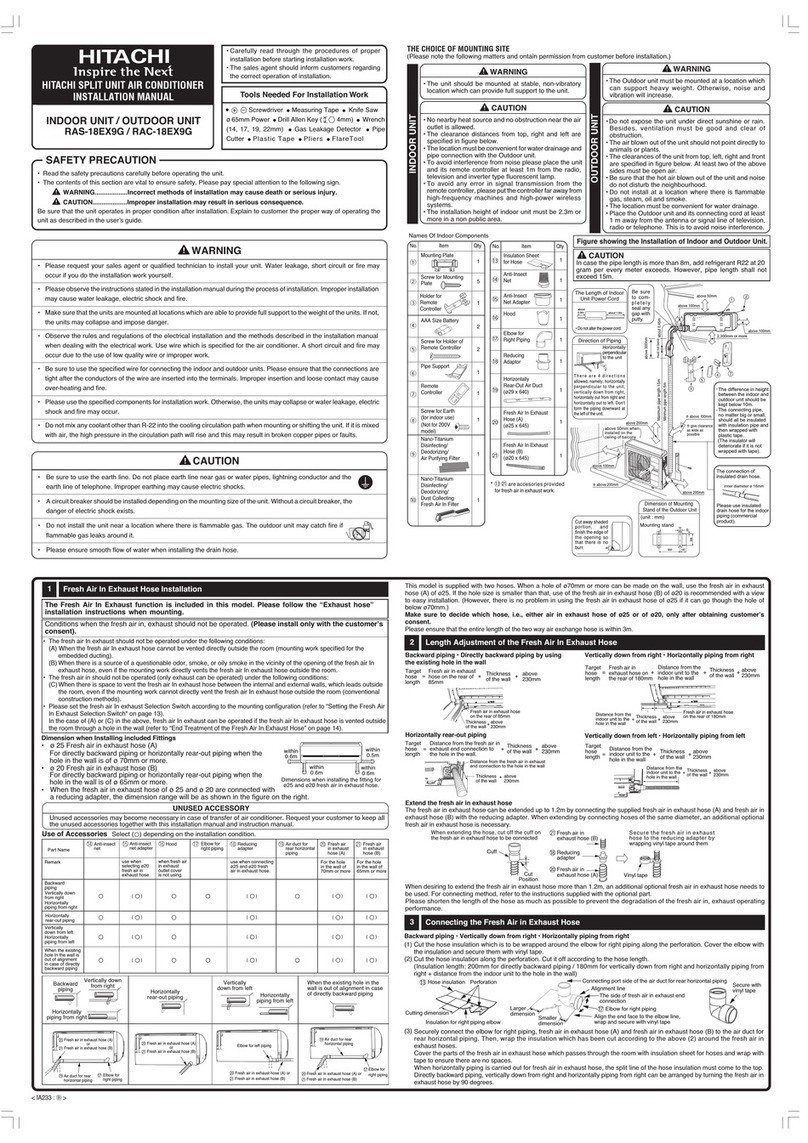
Hitachi
Hitachi RAS-18EX9G User manual
Popular Air Conditioner manuals by other brands

Fujitsu
Fujitsu ASYG 09 LLCA installation manual

York
York HVHC 07-12DS Installation & owner's manual

Carrier
Carrier Fan Coil 42B Installation, operation and maintenance manual

intensity
intensity IDUFCI60KC-3 installation manual

Frigidaire
Frigidaire FAC064K7A2 Factory parts catalog

Sanyo
Sanyo KS2432 instruction manual

Mitsubishi Electric
Mitsubishi Electric PUHZ-RP50VHA4 Service manual

Panasonic
Panasonic CS-S18HKQ Service manual

Panasonic
Panasonic CS-E15NKE3 operating instructions

Gree
Gree GWH18TC-K3DNA1B/I Service manual

Friedrich
Friedrich ZoneAire Compact P08SA owner's manual

Daikin
Daikin R32 Split Series installation manual
